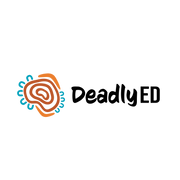Part of our work here at Deadly Ed is to provide professional learning to educators on all things Aboriginal Education. In our work, and experiences as teachers, we know that many educators lack the confidence to engage fully with Aboriginal Education, and we also know that there are many educators who don’t see the value of investing time in Aboriginal Education.
So why is this?
Did you know that up until 1972, New South Wales public school principals could exclude and refuse entry for Aboriginal students? This ‘Exclusion on Demand’ policy meant that any white parent who didn’t want an Aboriginal child attending the same school or to be in the same class as their child could write to the principal and ask for that Aboriginal child to be removed. Alarmingly, this policy was only amended 50 years ago.
Did you also know that it was only in 1982, that the New South Wales Department of Education released its first Aboriginal Education policy?
Looking from a sociological point of view, and through an historical lens – or if you’re a First Nations person then you just know – it’s easy to arrive at the conclusion that the attitudes, enthusiasm, or lack thereof, towards Aboriginal Education stems from the policies put in place to exclude First Nations peoples from modern Australia.
And people wonder why each year we see data about First Nations students not achieving within a system that wasn’t designed for them. But that’s another issue up for discussion at a later time…
Since the policy changes, First Nations people have pulled up a seat at the education table and have voiced the need for better and extensive professional learning and development for educators already working in the system. They have also looked to universities to do their part in delivering courses to pre-service teachers where they are to learn about the importance, value and delivery of Aboriginal Education in the school context. You’ll find that at most universities, these Aboriginal Education courses are now a compulsory part of obtaining a teaching degree.
Personally, I didn’t find the compulsory Aboriginal Education course at my university effective. I remember learning about the 8 Ways pedagogical framework but not learning how to effectively embed the pedagogical practice into lessons or even reading any work by Tyson Yunkaporta. And I distinctly remember a conversation in a tutorial early in the course where the teacher was trying to stress the importance of connecting with local Aboriginal communities. Throughout the discussion, someone had asked for explicit strategies that would be appropriate to engage and create meaningful relationships with mob. The teacher’s suggestion was to merely “host a barbeque” and then the conversation moved on. I think it was from here that I began to disengage because I knew that there were more ways than just having a barbeque to create relationships with Aboriginal communities. I was frustrated and felt that anyone thinking that chucking a snag on a piece of bread with a bit of sauce was going to be good Aboriginal Education would need their perspectives readjusted.
Curious about whether things have improved, we asked followers across our socials recently what their experiences at university have been like in these compulsory Aboriginal Education courses. This is a summary of what you told us:
-
Pre-service teachers are learning about the 8 Ways of Learning framework but feel as if they don’t receive enough depth in their understanding of it in a 10-13-week course that has to cover a lot of other aspects of Aboriginal Education.
-
Research and academic papers written about Aboriginal Education and First Nations students are, a lot of the time, being told from the perspective of white people and not from First Nations people or First Nations educators and academics.
-
Core specialist courses that teach you how to teach your Key Learning Area aren’t addressing the Aboriginal and Torres Strait Islander histories and cultures curriculum priorities that are outlined in NSW Department of Education and the Australian Curriculum syllabuses. Meaning that the onus of delivering ideas on how to embed Aboriginal perspectives into teaching and learning is being left to Aboriginal Education units to do so in one compulsory course. This isolates the responsibility of Aboriginal Education on to First Nations educators and academics. It also sends the message that it’s just up to First Nations people to take on the responsibility of Aboriginal Education.
-
Pre-service teachers are learning about their respective state’s Aboriginal Education policy, the importance of Aboriginal Education advisory bodies like the NSW Aboriginal Education Consultative Group, and why Aboriginal perspectives need to be embedded into lessons, but they’re not being given the strategies or tools to put their learning into action. Pre-service teachers find that they struggle to identify appropriate lesson materials to embed Aboriginal perspectives when they enter the classroom.
FYI if this applies to you, you can find our ‘Is this an appropriate First Nations resource?’ guide to help you out.
Plus…
-
Some of you felt as if you were being told incorrect or outdated information.
-
Some of you have had to seek out your own professional learning or tried to pick up other Aboriginal Studies courses to deepen your understanding.
-
Some of you felt uncomfortable in classes and tutorials because of other people’s racism and uneducated views.
-
Some of you said the learning you engaged with was so basic and surface level that you felt like the standard you were being positioned to live up to was poor and not good enough given it’s 2022.
-
Some of you said that your university had a stigma around Aboriginal Studies courses being ‘easy’ and always an ‘easy pass’, so many people would not turn up to lectures or classes and know that they could still pass the course, satisfying the requirements of the compulsory aspects of their degree.
Honestly, this list could go on. But I’m a bit fired up now and concerned about the lack of cultural safety in university classrooms. The message we take back from what our followers, friends and teachers in our communities say is that universities need to do better.
In education, we talk about educating the whole child and taking students on learning journeys. This same concept should and must apply to adult learners. Pre-service teachers should come from schools where they have developed an appreciation for First Nations histories and cultures because their teachers embedded Aboriginal perspectives in their lessons. This appreciation should then be further developed in tertiary study, so that when pre-service teachers exit universities they do so with the drive and confidence to deliver Aboriginal Education in their role as a teacher. Teachers in classrooms need to be provided with ongoing, meaningful and rich professional learning around Aboriginal Education so that they can inspire students in their classrooms. As you can see, the teacher should feed the student, the university should feed the pre-service teacher, the education department should feed the teacher, so the teacher can then feed the student.
And as a side note, when we talk about embedding Aboriginal perspectives, we’re talking about embedding aspects of Australian history. First Nations history is Australian history and that should not be forgotten.
There are so many First Nations people who are working hard to show educators the positive power of Aboriginal Education and it’s about time the system meets them where they’re at. It’s time for both state education departments and universities pick the bar up off the floor and set a high standard for themselves, teachers and pre-service teachers. But until there is a genuine commitment to Aboriginal Education, we will see the cycle continue where both teachers and pre-service teachers lack the necessary skills, tools and insight to deliver effective Aboriginal Education.
So how can we help? If you think your school or University could do with some reflection and a refresh on your approach to Aboriginal Education, then you can contact us here





